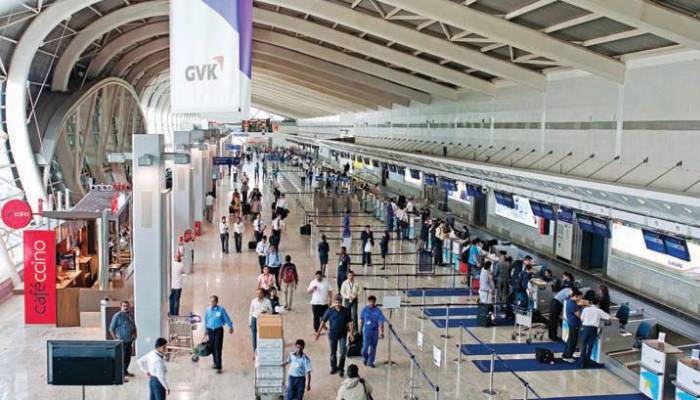
or

With the objective of promoting Indian economy, the Government of India initiated various steps under Public-Private Participation (PPP) model for inviting private investments in the Airport Sector. For encouraging such investment, the Government of India (GOI) announced various fiscal incentives and concessions in tandem with respective State Governments. In the year 2003, the Airports Authority of India Act, 1994 (“AAI Act”), was amended to enable setting up of private Airports and the leasing of existing Airports to private operators and, therefore Airport Authority of India (Amendment) Act, 2003 was brought into effect on 01.07.2004. Pursuant to this, in 2006 the Government of India, approved the modernization, up-gradation and development of the Delhi and Mumbai Airports through private sector participation and new Greenfield Airports at Hyderabad and Bangalore under PPP were set up.
In order to regulate the tariffs and to monitor the performance standards of the major airports in the country, the GOI sets up a regulatory authority, namely, the Airports Economic Regulatory Authority (AERA), by an Act of Parliament, namely, The Airports Economic Regulatory Authority of India Act, 2008. AERA was established by way of a Government notification on 12.05.2009. AERA is an Independent sectorial regulator to regulate tariff for the aeronautical services (i.e. Air Traffic Management, Landing & Housing, Ground Safety, Ground Handling, Cargo, Fuel Supply services) and to monitor service quality for the Major Airports. At present there are 13 Major Airports in India. AERA’s scope is to set aeronautical charges on a 5 year cycle, taking into account the economic viability of an airport, in line with ICAO principles of transparency, cost-relatedness, nondiscrimination and user consultation. This will be based on a determination of the costs of delivering aeronautical services in an efficient manner and to a desired level of service, including both capital expenditure and operating activities. The regulator also determines whether User Development and Airport Development Fees are appropriate, and monitors service and quality standards.
It is pertinent to note that the ‘Watchdog for Economic Regulation of Major Airports’ came into existence only in the year 2009 whereas the Concession Agreements were signed in early 2006.
After the gap of three years the Economic Regulator is brought into existence. AERA after its formation has issued an open and transparent process, involving extensive stakeholder consultation, to establish its regulatory philosophy and approach as well as to evolve detailed procedures and systems for determination of tariff and monitoring of performance standards.
However, main legal issues emerging are from the situation that there are certain major deviations between the Clauses of AERA Act and the Concession Agreements. This will have long term repercussions on the regulator’s role on tariff fixation in Delhi, Mumbai, Hyderabad and Bangalore and other Major Airports. In terms of section 13(2) of AERA act, one of the important functions of the Authority is to determine the tariff for the aeronautical services. However, definitions of aeronautical services differ substantially between OMDA [Operation,Management and Development Act] the concession agreement and the AERA Act. Ground handling Service, for example is a non-aeronautical service in accordance with OMDA but it is an aeronautical service in terms of AERA act. Presently AERA has determined the Aeronautical tariffs for Delhi, Mumbai and Hyderabad Airport. Major problem faced by Aviation Industry as of now is uncertainty in Economic regulation. The underlying legislative intent of these enactments is to carry out the purposes of the stated policy – i.e., to bring in private capital to take care of the high investment needs of the Airport sector and for that purpose to create an atmosphere where private players can invest in the Airport sector.
In India the Economic Regulatory framework in Aviation Industry i.e. the determination of Aeronautical tariff, Airport Development fee, User Development fee is still in its nascent stage as compared globally. GOI should have established the Regulatory Authority first before signing the Concessions Agreements to avoid uncertainty and conflicts. A clear roadmap or let me put the term ‘runway’ to be in place prior to the process of privatization of Airports. GOI is required to provide a regulatory environment wherein the Aviation industry flourishes and not as a deterrent for noninvestment by the Private parties.
Presently there is sheer turbulence in the Industry and GOI has to act in a responsive and expeditious manner for ensuring that all the Regulatory authorities in Aviation sector harmoniously act in the promoting the GOI Open sky policy.
Garima is presently working as a Legal Consultant with GMR Airports Ltd., New Delhi

Lex Witness Bureau

Lex Witness Bureau

Lex Witness Bureau

For over 10 years, since its inception in 2009 as a monthly, Lex Witness has become India’s most credible platform for the legal luminaries to opine, comment and share their views. more...
Connect Us:


The Grand Masters - A Corporate Counsel Legal Best Practices Summit Series
www.grandmasters.in | 8 Years & Counting
The Real Estate & Construction Legal Summit
www.rcls.in | 8 Years & Counting
The Information Technology Legal Summit
www.itlegalsummit.com | 8 Years & Counting
The Banking & Finance Legal Summit
www.bfls.in | 8 Years & Counting
The Media, Advertising and Entertainment Legal Summit
www.maels.in | 8 Years & Counting
The Pharma Legal & Compliance Summit
www.plcs.co.in | 8 Years & Counting
We at Lex Witness strategically assist firms in reaching out to the relevant audience sets through various knowledge sharing initiatives. Here are some more info decks for you to know us better.
Copyright © 2020 Lex Witness - India's 1st Magazine on Legal & Corporate Affairs Rights of Admission Reserved